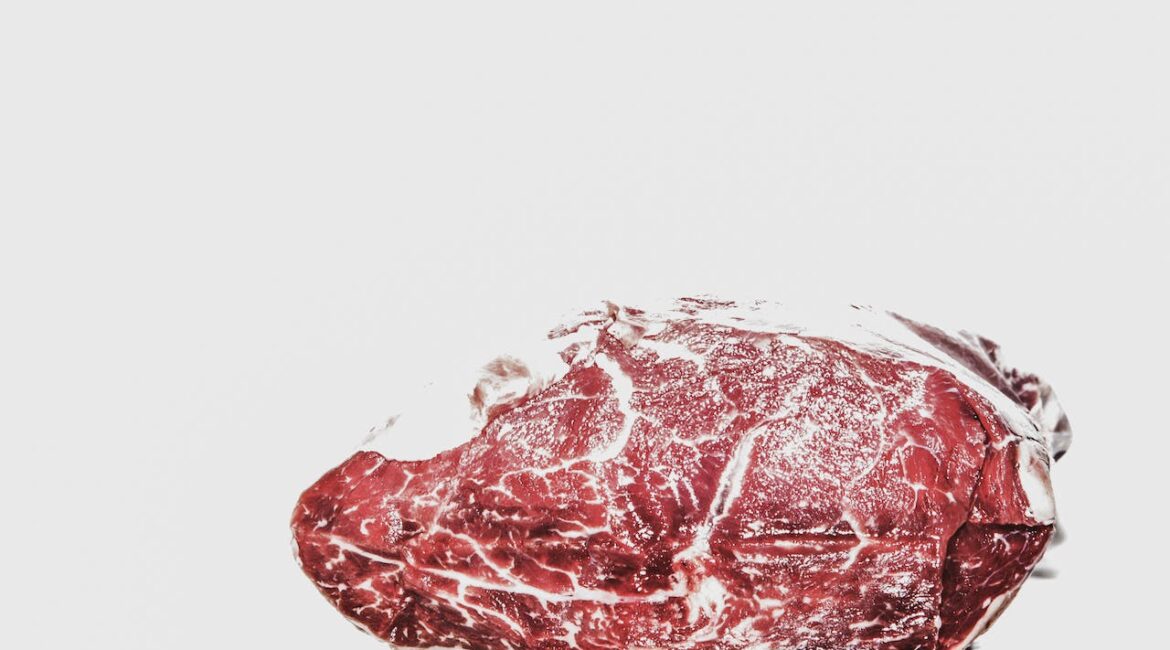Raw red meat’s red juice has long been mistaken for blood. The reality, however, is quite different. Let’s demystify the truth about this commonly misinterpreted aspect of meat.
Contrary to popular belief, the red liquid oozing from your steak or Sunday roast isn’t blood. In fact, the majority of blood is removed from the meat during the slaughtering process. This thorough removal process explains why there’s no blood visible in raw white meat. So, what you’re seeing is actually a mix of water and a protein called myoglobin.
Myoglobin is a protein responsible for storing oxygen in muscle cells. Its structure and function are akin to hemoglobin, which stores oxygen in our red blood cells. Muscles that are frequently used require a steady supply of oxygen for energy, making myoglobin essential. Because of its highly pigmented nature – it’s red – the higher the myoglobin content, the redder the meat appears.
The presence of myoglobin primarily differentiates red meat from white meat. Mammals, which generally have muscles rich in myoglobin, fall into the red meat category. Conversely, animals like poultry, which have lower myoglobin levels, or certain sea creatures which lack it entirely, are labeled as white meat.
The transformation of meat from a pinkish-red to a brown shade during cooking isn’t some culinary magic but science. The iron atom in myoglobin, when exposed to heat, shifts from a +2 oxidation state to +3, undergoing an electron loss. This change impacts the meat’s hue, turning it brown.
Interestingly, fish are mostly considered white meat since their muscles don’t require significant myoglobin levels. They float, eliminating the need for muscles to battle gravity or bear weight like terrestrial animals. However, some fish, such as sharks and tuna, swim continuously and are migratory. Their muscles are extensively used and consequently have higher myoglobin content, giving their flesh a reddish hue.
For clarity, the USDA classifies all meats from livestock as red due to their myoglobin content surpassing that of chicken or fish.
When beef is vacuum-sealed and devoid of oxygen, it adopts a purplish shade. Once exposed to air, the meat turns red in about 10-20 minutes, thanks to myoglobin’s reaction with oxygen. If beef remains refrigerated for over five days, it begins to brown, a result of myoglobin undergoing chemical alterations. But remember, a color change doesn’t necessarily indicate spoilage. Trust your sense of smell over sight in such instances.
The Science Behind Meat’s Color Change: From Fresh to Brown
Meat undergoes a fascinating transformation in color as it sits in a grocery store display. It’s a process that’s predominantly influenced by the oxidation of myoglobin molecules. Freshly packed meat is usually vibrant in hue thanks to myoglobin combined with oxygen, giving it that attractive red shade many associate with freshness. However, as days go by, myoglobin naturally oxidizes, and the meat transitions to a brownish tint. Contrary to what some might think, this doesn’t indicate spoilage. In fact, the meat remains perfectly safe for consumption. It’s simply a natural progression in the meat’s appearance.
How is Blood Efficiently Extracted from Livestock?
The process of blood removal from meat is meticulously designed for efficiency and hygiene. During the slaughtering phase, the carcass is hung upside down by its feet. The arteries and veins in the neck are then slit open, enabling the majority of the blood to drain out. Inefficient or incomplete bleeding can lead to a higher residual blood content in the meat, which can affect its shelf life and quality. On average, it’s estimated that butchered meat retains only about 0.3% of the total blood volume of the live animal. Such processes ensure the meat we consume is mostly devoid of blood, leaving primarily water and myoglobin.
Myoglobin’s Pivotal Role in Determining Meat’s Redness
While blood might be the first culprit most people suspect when seeing red meat, the protein myoglobin is the real hero behind the color. Myoglobin’s primary function is oxygen storage in muscle cells, an essential aspect for muscles that require immediate energy during frequent use. The level of myoglobin in the meat also dictates the depth of its red shade. For instance, meat from older animals tends to be darker because myoglobin levels rise with age. Interestingly, when myoglobin mixes with oxygen, it forms oxymyoglobin, resulting in a bright red appearance. This pigment transformation is why the fresh meat at your local butcher or supermarket often boasts such a vibrant color.
Choosing Fresh Meat by Color
When shopping for red meat, you may be tempted to always reach for the brightest red piece. While a vibrant red hue does suggest that the meat has recently been exposed to oxygen, it doesn’t necessarily mean it’s fresher than slightly brown meat. Remember, the browning can be due to myoglobin’s natural oxidation process. Instead of just color, trust your nose and check for any off-putting smells to determine the meat’s freshness. It’s essential to store meat properly to maintain its appealing color for as long as possible. Keep your meat in the coldest part of your refrigerator, usually at the back, to slow down the oxidation of myoglobin. If you’re not planning to use the meat within a few days, consider vacuum-sealing it. This not only helps in preserving its freshness but also retains that purple-red shade due to the absence of oxygen.
Understanding Meat Labels Regarding Myoglobin
While browsing meat aisles, you might come across terms like “air-chilled” or “vacuum-packed.” Knowing what these mean can help you make informed choices. Air-chilled meats are likely to have a brighter red appearance as they’ve been exposed to oxygen. In contrast, vacuum-packed meats will often appear more purple but will turn red once you open the pack and expose the meat to air. Understanding these terms ensures you’re not misled by the meat’s color alone.
If you’ve found yourself intrigued by what you’ve read thus far and are eager to discuss or learn more, I’m just as enthusiastic to engage with fellow meat aficionados. Reach out through our contact form and let’s embark on this flavorful journey of discovery together!
- Transform Your Health with Medford Medical Weight Loss Program - June 9, 2025
- A Chat with Nate and Mika, Christian Wedding Photographers - July 18, 2024
- Ultimate Guide To Playing Online Casinos - May 27, 2024







